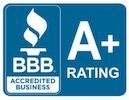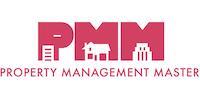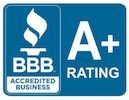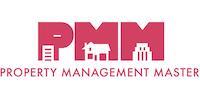Maintenance Request
Benefits of Using Online Maintenance Request
24/7 Conveniences
Communication
Reduces Errors
Speed and Priority
Troubleshooting Tips to Keep You Comfortable
How Do I Locate the Water Meter and Turn Off the Water to the Property?
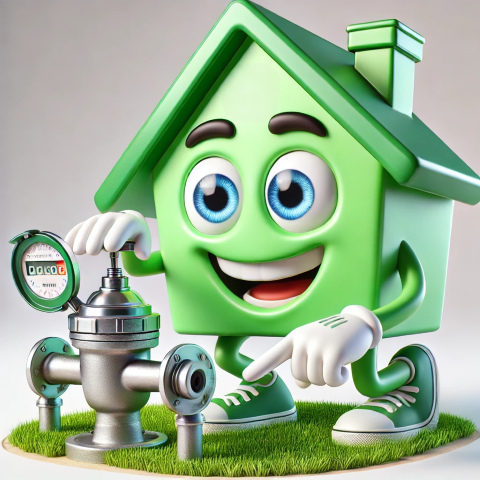
Find the water meter: Most water meters are located near the street in a concrete or plastic box labeled "Water" or "Meter." If you’re in a multi-unit property, check with your property manager for the specific location.
Open the meter box: Use a sturdy tool, like a flathead screwdriver, to carefully pry open the lid. Be cautious of insects or debris inside.
Locate the shut-off valve: Inside the meter box, look for a valve with a handle or lever. It’s typically located before or after the meter itself.
Turn the valve off: Turn the handle or lever clockwise (to the right) until it fully stops. This will shut off the water supply to the property.
Test to confirm: Turn on a faucet inside the home to ensure the water has stopped flowing.
If you’re unable to locate the meter or turn off the water, please contact our office or the water utility provider for assistance. 530-410-6085
How Do I Turn Off the Water Where It Comes Into the House?
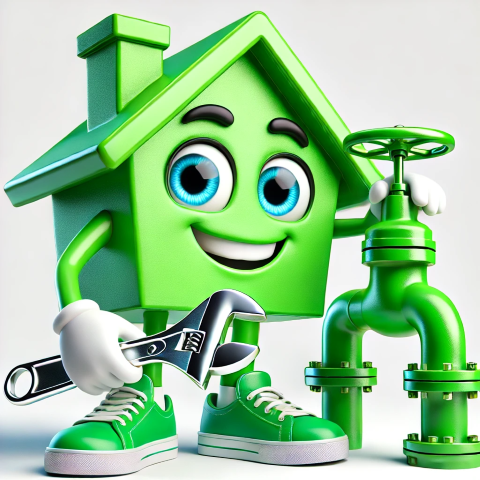
Locate the main shut-off valve: The main water shut-off valve is usually found where the water line enters the house. Common locations include:
- In the garage, near the front wall.
- In a basement, near the foundation wall.
- On an exterior wall, close to the ground.
Identify the valve type: The shut-off valve might look like a round handle (a gate valve) or a lever-style handle (a ball valve).
Turn off the valve:
- For a gate valve: Turn the handle clockwise (to the right) until it stops.
- For a ball valve: Rotate the lever 90 degrees so it’s perpendicular to the pipe.
Test the water supply: Turn on a faucet inside the home to confirm the water has stopped.
If you’re unable to locate or operate the shut-off valve, or if it’s stuck, please contact our office 530-410-6085
How Do I Turn Off the Water to a Water Heater?
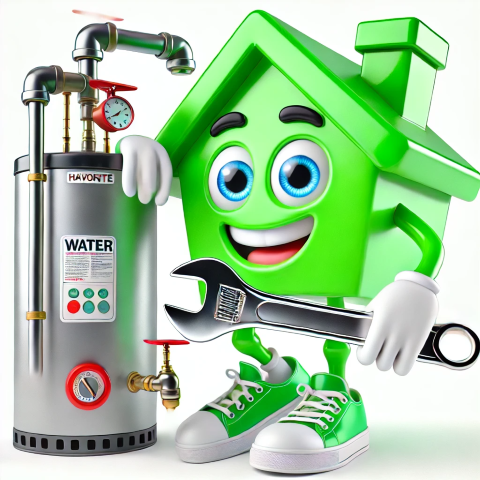
Locate the water heater: Water heaters are typically found in a utility closet, garage, basement, or attic.
Find the water shut-off valve: Look for the cold water supply pipe entering the top of the water heater. The shut-off valve is usually attached to this pipe.
- Tip: The cold water pipe is often marked with a blue color or labeled "Cold.
Turn off the valve:
- If the valve is a round handle (gate valve), turn it clockwise (to the right) until it’s fully closed.
- If it’s a lever-style handle (ball valve), rotate the handle 90 degrees so it’s perpendicular to the pipe.
Test the water: Turn on a hot water tap in the house. If water stops flowing, the shut-off was successful.
Important: Turning off the water to the water heater will stop hot water from being available in the home. If you’re experiencing a leak or an issue with the water heater, contact our office or a licensed plumber for assistance.
How Do I Turn Off the Water to a Faucet or Toilet?
Locate the shut-off valve:
- For a faucet: Look under the sink for small valves connected to the water pipes.
- For a toilet: Find the valve on the wall or floor near the base of the toilet.
Turn off the valve: Twist the valve clockwise (to the right) until it stops. This will shut off the water to the faucet or toilet.
Test to confirm: Turn on the faucet or flush the toilet to ensure the water has stopped flowing.
If the valve is stuck or doesn’t stop the water, contact our office for further assistance.
What Should I Do If My Heater or AC Has Stopped Working?
Tenant PortalCheck the thermostat: Ensure the thermostat is set to the correct mode (heat or cool) and temperature. Replace the batteries if the display is blank or unresponsive.
Inspect the circuit breaker: Go to your electrical panel and check if the breaker for the heater or AC has tripped. If it has, reset it by flipping it off and then back on.
Reset the system: Turn off the breaker that controls the heater or AC for 60 seconds. Then, turn it back on to reset the system. Wait a few minutes to see if the unit begins functioning again.
Verify the air filter: A clogged or dirty air filter can restrict airflow, causing the system to malfunction. Locate the filter, remove it, and replace it if it’s dirty.
Check the vents and registers: Ensure all vents and registers are open and unobstructed to allow proper airflow throughout the home.
Inspect the outdoor unit (for AC): If you have central air, check the outdoor unit to ensure it’s free of debris like leaves, dirt, or branches.
Test the system: After completing these checks, turn the system back on and wait a few minutes to see if it begins operating properly.
What Should I Do If My Evaporative Cooler Stops Working
Tenant PortalCheck the thermostat or control panel: Ensure the cooler is turned on and the settings are correct. If the cooler has a control panel, verify that the fan and pump are set to the desired mode.
Inspect the circuit breaker: Go to the electrical panel and check if the breaker for the evaporative cooler has tripped. If it has, reset it by flipping it off and then back on.
Check the water supply: Confirm that water is flowing to the cooler. Locate the water shut-off valve near the base of the house (not on the roof) and ensure it is fully open.
Examine the vents and airflow: Make sure all vents are open and unobstructed to allow for proper airflow inside the home.
Avoid climbing on the roof: If the above steps don’t resolve the issue, submit a maintenance request through our office or your tenant portal. Evaporative coolers often require specialized servicing, and climbing on the roof can be dangerous.
For further assistance, please submit a work order through your tenant portal. Once received, we’ll promptly arrange for a professional technician to inspect the cooler.
What Should I Do If There’s No Power to Part of the House
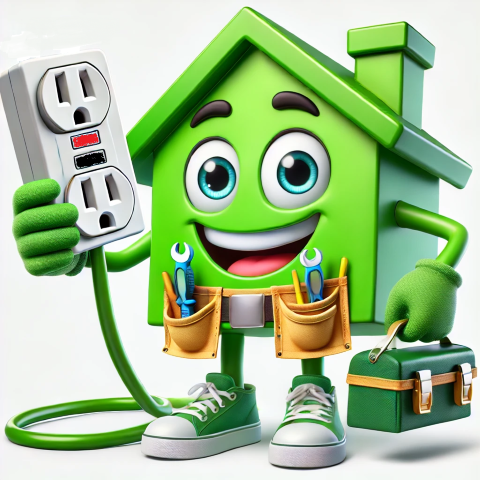 Watch Video
Watch VideoCheck the circuit breaker: Locate the electrical panel, usually found in the garage, basement, or on an exterior wall. Look for any tripped breakers (they will appear halfway between the "on" and "off" positions). Reset a tripped breaker by flipping it all the way off, then back on.
Test the affected area: Turn on lights or plug in a small device to see if power has been restored.
Inspect GFCI outlets: If the outage affects areas like the kitchen, bathroom, or garage, check for Ground Fault Circuit Interrupter (GFCI) outlets. Press the "Reset" button on these outlets to restore power.
Unplug devices: If too many devices are plugged into one circuit, it may overload the system. Unplug items and try resetting the breaker again.
Verify with neighbors: If nearby homes are also experiencing an outage, it may be an issue with the utility provider. Contact them directly for updates.
If the problem persists after these steps, please place a work order through your tenant portal so we can arrange for an electrician to address the issue.
What Should I Do If My Garbage Disposal Isn’t Working?
Watch VideoCheck for power: Make sure the disposal is plugged in under the sink. If it’s already plugged in, test the outlet by plugging in another device.
Press the reset button: Look for the red reset button on the bottom or side of the disposal unit. Press it firmly, then test the disposal by turning it on.
Inspect for jams: If the disposal hums but doesn’t spin, it may be jammed. Turn off the disposal and unplug it. Use the included wrench (or a hex key) to manually turn the motor from underneath the unit, or gently use tongs to remove any debris inside. Never use your hands inside the disposal.
Clear debris: Check the sink drain for large items or buildup that may be blocking the disposal.
Avoid overloading: Only place small amounts of soft food scraps in the disposal, and always run cold water while using it.
If the disposal still doesn’t work after trying these steps, please place a work order through your tenant portal so we can have a professional technician assess the issue.
What Should I Do If I Smell Gas in My Home?
Watch VideoEvacuate immediately: If you smell gas, leave the property right away. Do not use electrical switches, appliances, or anything that could create a spark.
Call your gas provider: Once you are safely outside, call PG&E for natural gas at 1-800-743-5000 or contact your propane company if your home uses propane.
Avoid open flames: Do not light matches, candles, or use lighters.
Shut off the gas (if safe): If you know where the gas shut-off valve is located and it’s safe to do so, turn it off. The valve is typically near the gas meter and can be turned off by rotating it a quarter turn until it’s perpendicular to the pipe.
Call our office immediately: After ensuring your safety and contacting the gas company, call our office at 530-410-6085 or our emergency line to report the issue straight away.
What Should I Do If I Discover a Roof Leak?
Contain the water: Place a bucket, trash can, pot, or towels under the leak to catch dripping water and prevent damage to floors or furniture.
Move belongings: If possible, relocate any furniture, electronics, or valuables away from the leaking area to prevent further damage.
Do not attempt repairs: For safety reasons, do not climb on the roof or try to patch the leak yourself.
Check for ceiling damage: If the ceiling is bulging or sagging, water may be pooling above. Avoid touching or poking the area, as it could cause a collapse.
Call our office immediately: Contact us at 530-410-6085 to report the leak. If it’s after hours, call our emergency line.
The sooner we know about the issue, the quicker we can arrange for repairs.
Important: If water is spreading rapidly or causing electrical hazards, turn off power to the affected area and call us right away.
What Should I Do If My Carbon Monoxide Detector Goes Off?
Watch VideoEvacuate immediately: If your carbon monoxide (CO) detector is sounding an alarm, leave the home right away. Carbon monoxide is an invisible, odorless gas that can be deadly.
Call 911: Once you are safely outside, contact emergency services to report the alarm. They will assess the situation and ensure it is safe to return.
Do not re-enter the home: Stay outside until emergency personnel have inspected the property and confirmed it is safe.
Avoid using appliances: Do not turn on gas-powered appliances, stoves, or heaters until the source of the issue is identified.
Call our office immediately: Once emergency responders have cleared the home, contact us at 530-410-6085 or our emergency line so we can inspect the property and arrange for necessary repairs.
Important: If anyone in the home is experiencing dizziness, nausea, headaches, or confusion, seek medical attention immediately, as these are signs of carbon monoxide poisoning.
What Should I Do If I Lose My Keys or Get Locked Out?
Check for a spare key: If you have a roommate or a trusted friend or family member with a spare key, try contacting them first.
Call a locksmith: For security reasons and due to team member safety and overtime laws, we are unable to provide lockout services. You will need to contact a licensed locksmith to regain access to your home.
Notify our office if keys are lost: If you have lost your keys, please inform our office at 530-410-6085. If rekeying is required, you may be responsible for the cost.
Consider making a spare key: To avoid future lockouts, we recommend making a spare key and keeping it in a secure place.
Important: If you are locked out due to an emergency (such as a child or pet trapped inside), call 911 for immediate assistance.
Carol's Lock & Key 530-244-1001
King's Security Locksmith530-221-7277
Abbey Auto Lock & Key 530-222-5626
What Should I Do If My Refrigerator Stops Cooling? Resolution:
Tenant PortalCheck the temperature settings: Ensure the thermostats in the refrigerator and freezer are set to the correct temperature. The refrigerator should be around 37°F, and the freezer should be at 0°F.
Verify the power supply: Make sure the fridge is plugged in securely. If the outlet does not have power, check the circuit breaker and reset it if necessary.
Inspect the door seals: A loose or damaged seal can cause cold air to escape. Check for gaps or cracks in the gasket and ensure the door is closed correctly.
Keep vents clear: Inside the fridge and freezer, make sure air vents are not blocked by food, as this can restrict airflow and cause temperature issues.
Avoid overloading: Too much food can block airflow, preventing proper cooling. Try reducing the amount of stored items and see if cooling improves.
If your refrigerator still does not cool after these steps, please place a work order through your tenant portal so we can arrange for a technician to inspect and repair the unit.
Important: appliance repair companies respond on weekends or after hours, so repairs will take place on the next business day.

Authority Property Management Inc.
Search our Blog!
Anderson, Bella Vista, Cottonwood, Happy Valley, Igo, Keswick, Lake California, Millville, Mountain Gate, Oak Run, Ono, Palo Cedro, Redding, Shasta County, Old Shasta, Shasta Lake,
Authority Property Management Inc. in Redding, CA is a licensed Property Management Company and Rental Agency. We offer comprehensive real property management services in Shasta County and surrounding areas. Our expertise includes managing rental properties, single-family homes, apartments, and commercial properties.
Contact Us Today For Expert Property Management Services In Redding, CA!
2025 Authority Property Management Inc., Redding, CA. All Rights Reserved.


